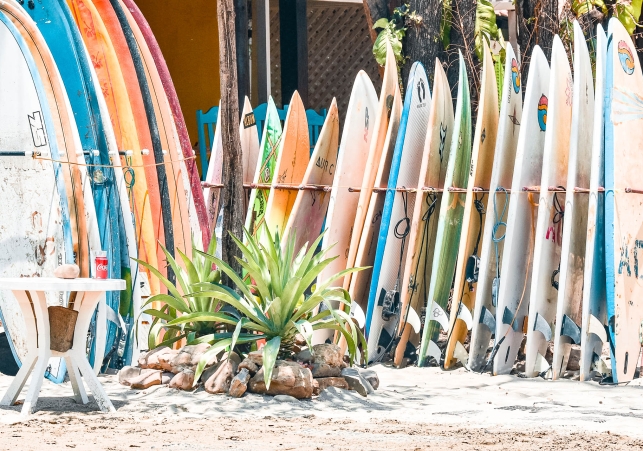Choosing the right surfboard for your skill level

Introduction: Surfing, with its exhilarating blend of athleticism and harmony with nature, is a sport that captivates people around the world. Whether you're a novice just dipping your toes into the waves or an experienced rider seeking the perfect board for your skill level, selecting the right surfboard is crucial for a fulfilling and safe experience. In this comprehensive guide, we'll explore the factors that influence your choice of surfboard and provide tailored recommendations for beginners, intermediate surfers, and advanced riders.
Understanding Your Skill Level: Before delving into the specifics of surfboard selection, it's essential to assess your skill level honestly. Surfing proficiency can be broadly categorized into three main levels:
- Beginner: Novice surfers who are just starting their journey in the sport. They are typically learning basic skills such as paddling, catching waves, and maintaining balance while riding.
- Intermediate: Surfers who have mastered the fundamentals and are progressing to more advanced maneuvers. They are comfortable riding different types of waves and may be experimenting with turns and tricks.
- Advanced: Experienced surfers with a high level of skill and confidence in various wave conditions. They are capable of executing complex maneuvers, riding larger waves, and may even participate in competitions.
Factors Influencing Surfboard Selection: Several key factors influence the choice of surfboard, including:
- Board Shape and Design: The shape, length, width, and thickness of a surfboard significantly impact its performance in the water. Different designs cater to specific skill levels and wave conditions.
- Volume and Buoyancy: The volume of a surfboard determines its buoyancy and paddling efficiency. Beginners often benefit from boards with higher volume, providing stability and easier wave-catching.
- Rocker: The curvature of the surfboard from nose to tail affects its maneuverability and speed. Boards with more pronounced rocker are better suited for steeper waves and tight turns.
- Fin Setup: The configuration and number of fins on a surfboard influence stability, control, and maneuverability. Various setups cater to different riding styles and wave conditions.
Choosing the Right Surfboard for Your Skill Level: Now, let's delve into specific recommendations for each skill level:
-
Beginner Surfers:
- Ideal Board Type: Soft-Top or Foam Board
- Characteristics:
- High Volume: Provides stability and buoyancy for easier paddling and wave-catching.
- Soft Construction: Minimizes the risk of injury during falls and collisions.
- Wide and Stable: Offers ample surface area for balance and maneuvering.
- Recommended Length: 7 to 9 feet
- Fin Setup: Typically includes a single fin or thruster setup for enhanced stability.
- Best for Learning: Ideal for mastering basic skills and building confidence in small to medium waves.
-
Intermediate Surfers:
- Ideal Board Types: Funboard, Hybrid, or Fish
- Characteristics:
- Moderate Volume: Balances stability with maneuverability for progressing skills.
- Versatile Shape: Combines elements of shortboards and longboards for varied performance.
- Increased Performance: Allows for sharper turns and more dynamic maneuvers.
- Recommended Length: 6 to 8 feet
- Fin Setup: Thruster (three fins) or quad setup for enhanced control and maneuverability.
- Best for Progression: Suitable for honing skills in a range of wave conditions, from small to overhead waves.
-
Advanced Surfers:
- Ideal Board Types: Shortboard, Step-Up, or Gun
- Characteristics:
- Lower Volume: Provides responsiveness and maneuverability for advanced maneuvers.
- Performance-Oriented Design: Tailored for speed, precision, and critical wave positioning.
- Streamlined Shape: Enhances agility and control for high-speed surfing.
- Recommended Length: 5'6" to 7 feet
- Fin Setup: Thruster, quad, or even single fin setups, depending on personal preference and wave conditions.
- Best for High Performance: Designed for experienced surfers tackling challenging waves and executing advanced maneuvers such as aerials and barrel rides.
Conclusion: Selecting the right surfboard is a critical step in maximizing your enjoyment and progression in surfing. By considering factors such as board shape, volume, and skill level, you can make an informed decision that aligns with your goals and abilities. Whether you're a beginner just starting out or an advanced rider pushing the boundaries of performance, there's a perfect surfboard out there waiting to ride the waves with you. So, grab your board, paddle out, and let the adventure begin!
